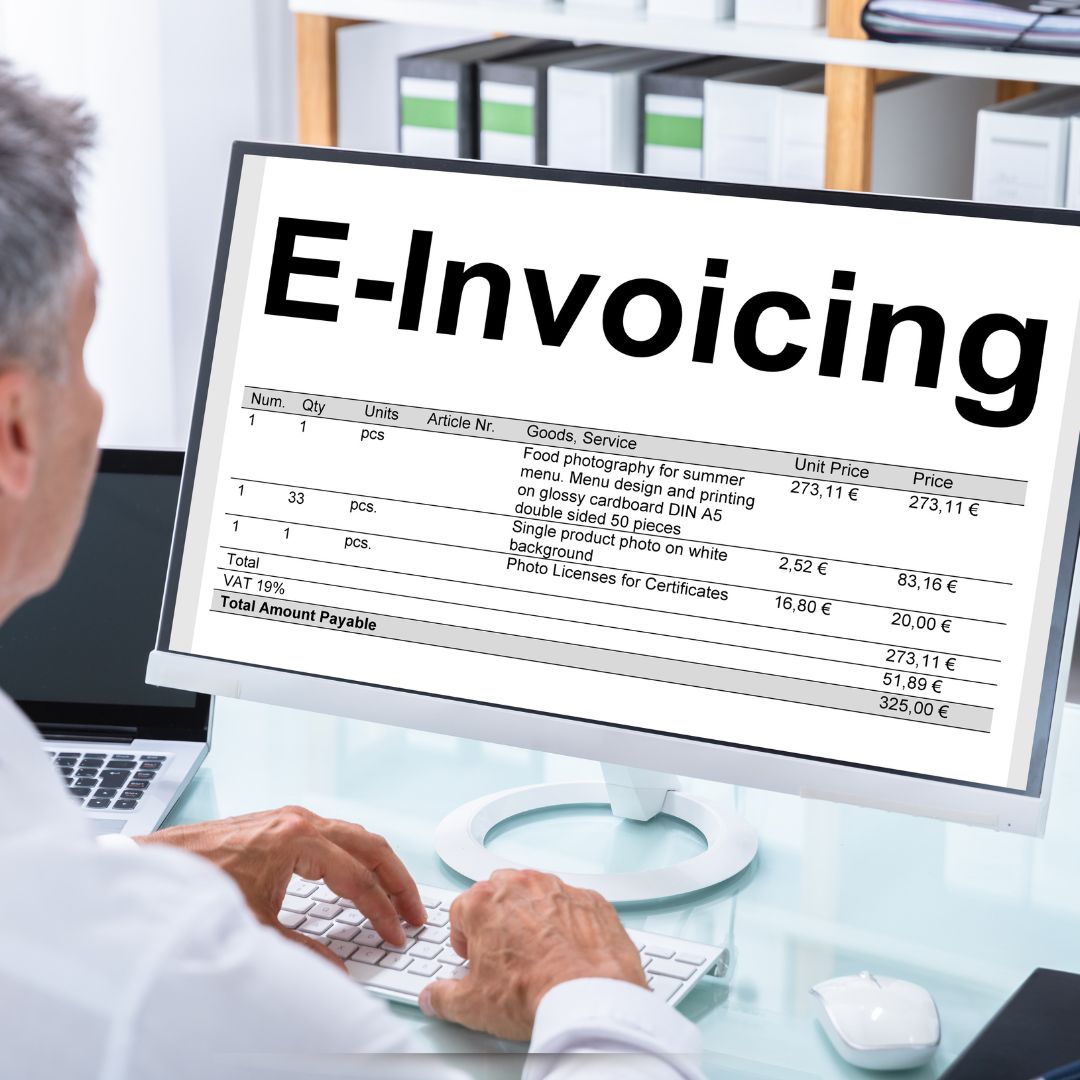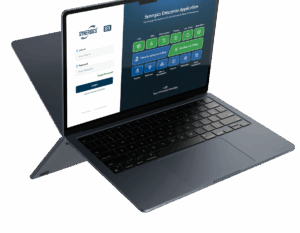In recent years, the Indian taxation system has undergone significant changes to increase transparency, reduce tax evasion, and make tax compliance easier for businesses. One of the most transformative changes has been the introduction of e-invoicing under GST. This system has revolutionized the way businesses issue, manage, and store invoices, ensuring accuracy and compliance while reducing manual errors. This blog delves into every aspect of e-invoicing under GST, its benefits, and how businesses can leverage the system to streamline their billing processes using e-invoice in GST and GST invoice online.
What is E-Invoicing under GST?
E-invoicing under GST is a system where business-to-business (B2B) invoices are electronically authenticated by the Goods and Services Tax Network (GSTN) before they are shared with the recipient. This means that for certain categories of businesses, generating an e-invoice is now mandatory for all B2B transactions. The e-invoice must comply with the specified format and be uploaded to the Invoice Registration Portal (IRP), where it is validated and assigned an Invoice Reference Number (IRN). The key benefit of this system is that it ensures the invoices are accurate and comply with GST regulations, making tax reporting much easier for businesses. E-invoicing under GST was introduced to prevent tax evasion, automate data entry, and simplify compliance.
How E-Invoicing Works
The process of e-invoicing under GST involves several steps. Businesses must first generate an invoice using their own accounting or ERP software. The invoice is then uploaded to the IRP in a specified format called the JSON file format. Once uploaded, the IRP checks the details for errors and discrepancies and validates the invoice. After validation, the IRP assigns an Invoice Reference Number (IRN) and digitally signs the invoice, adding a QR code that includes the key details of the invoice. This e-invoice, with its unique IRN and QR code, is then returned to the business, which can share it with the buyer. Simultaneously, the IRP sends the invoice data to the GST portal and the e-way bill portal (if applicable), ensuring that the invoice is automatically reflected in the GST returns. This automated process streamlines compliance and reduces manual intervention.
Applicability of E-Invoicing Under GST
E-invoicing under GST is mandatory for businesses with an annual turnover exceeding a certain threshold. Initially, it was introduced for businesses with a turnover of over ₹500 crores, but over time, the threshold was reduced to ₹100 crores and then ₹50 crores. Eventually, it is expected to cover almost all businesses that are registered under GST. However, certain businesses such as banks, financial institutions, and goods transport agencies are exempt from e-invoicing, regardless of their turnover. Additionally, e-invoicing under GST is applicable only for B2B transactions, meaning it is not required for business-to-consumer (B2C) transactions or exports.
Benefits of E-Invoicing under GST
E-invoicing under GST offers several advantages to both businesses and the government. For businesses, the system reduces the chances of errors in invoices, leading to fewer discrepancies in GST returns. Since the invoice data is automatically transferred to the GST portal and e-way bill system, businesses no longer need to manually enter the invoice details in their GSTR-1 form, saving time and effort. E-invoice in GST also helps businesses by reducing the chances of input tax credit (ITC) mismatches, as the system ensures that only authenticated invoices are uploaded. For the government, e-invoicing improves transparency and reduces tax evasion by providing real-time access to invoice data. This helps authorities track the flow of goods and services, verify the authenticity of transactions, and prevent fraudulent claims for input tax credits.
E-Invoice in GST: Key Features and Components
The e-invoice in GST system consists of several key components that businesses need to be aware of. These include the Invoice Reference Number (IRN), which is a unique identifier for each e-invoice, and the QR code, which contains essential details such as the supplier’s GSTIN, the buyer’s GSTIN, the invoice number, the invoice date, and the total invoice value. The e-invoice format also includes fields for mandatory details such as the description of goods or services, HSN codes, and the total taxable value. By ensuring that all these details are included in the e-invoice, businesses can avoid errors and ensure compliance with GST regulations.
GST Invoice Online: How to Generate and Manage E-Invoices
For businesses, generating a GST invoice online is a simple and efficient process. Most accounting and ERP software providers have integrated the e-invoicing system into their platforms, allowing businesses to generate e-invoices directly from their existing systems. To generate an e-invoice, the business first creates the invoice in its software, ensuring that all the necessary details such as the buyer’s GSTIN, the invoice value, and the HSN codes are included. The invoice is then converted into a JSON file and uploaded to the IRP. Once validated, the IRP returns the e-invoice with the IRN and QR code, which the business can then share with the buyer. The e-invoice is also automatically uploaded to the GST portal and reflected in the GSTR-1 form, making it easier for businesses to file their returns.
Businesses can also use the GST portal to generate a GST invoice online, especially for smaller businesses that may not have access to advanced accounting software. The GST portal provides a user-friendly interface where businesses can enter the invoice details, generate the e-invoice, and download it for their records. This ensures that even businesses without sophisticated systems can comply with the e-invoicing requirements and avoid penalties.
Challenges in Implementing E-Invoicing
While e-invoicing under GST offers numerous benefits, the transition to this system has not been without its challenges. One of the primary challenges faced by businesses is the need to upgrade their existing accounting and billing software to support e-invoicing. This requires investment in new software or updates to existing systems, which can be a financial burden for small and medium-sized enterprises (SMEs). Additionally, businesses need to train their staff on how to generate e-invoices and manage the new system, which can be time-consuming.
Another challenge is ensuring that the invoice data is accurate and complete. Any errors in the invoice, such as incorrect GSTINs or HSN codes, can result in the invoice being rejected by the IRP. This can lead to delays in invoicing and disruptions in the supply chain. Businesses also need to ensure that their systems are capable of handling the high volume of invoices that may need to be processed on a daily basis.
Despite these challenges, the benefits of e-invoicing far outweigh the difficulties. As more businesses adopt the system and become familiar with its processes, the challenges will become easier to manage, and the overall efficiency of tax compliance will improve.
The Future of E-Invoicing under GST
The future of e-invoicing under GST looks promising, as the system continues to evolve and expand. Over time, it is expected that e-invoicing will become mandatory for almost all businesses, regardless of their turnover. This will create a more standardized and transparent invoicing system across the country, making it easier for businesses to comply with GST regulations.
In the future, the government may also integrate e-invoicing with other systems, such as the e-way bill system, to further streamline the tax compliance process. This could include real-time tracking of goods and services as they move through the supply chain, providing greater visibility and control over tax compliance. Additionally, advancements in technology, such as artificial intelligence and machine learning, could be used to automate the e-invoicing process even further, reducing the need for manual intervention and improving accuracy.
Conclusion
E-invoicing under GST has transformed the way businesses generate, manage, and store invoices, making tax compliance more efficient and transparent. By implementing the e-invoice in GST system, businesses can reduce manual errors, ensure compliance with GST regulations, and streamline their invoicing processes. The ability to generate a GST invoice online, either through accounting software or the GST portal, has made it easier for businesses to comply with the new regulations, regardless of their size or industry. While there are challenges in adopting e-invoicing, the benefits far outweigh the difficulties, and the system is set to become an integral part of the Indian taxation landscape. As the e-invoicing system continues to evolve, businesses that embrace this change will be well-positioned to reap the rewards of a more efficient and transparent tax system.











